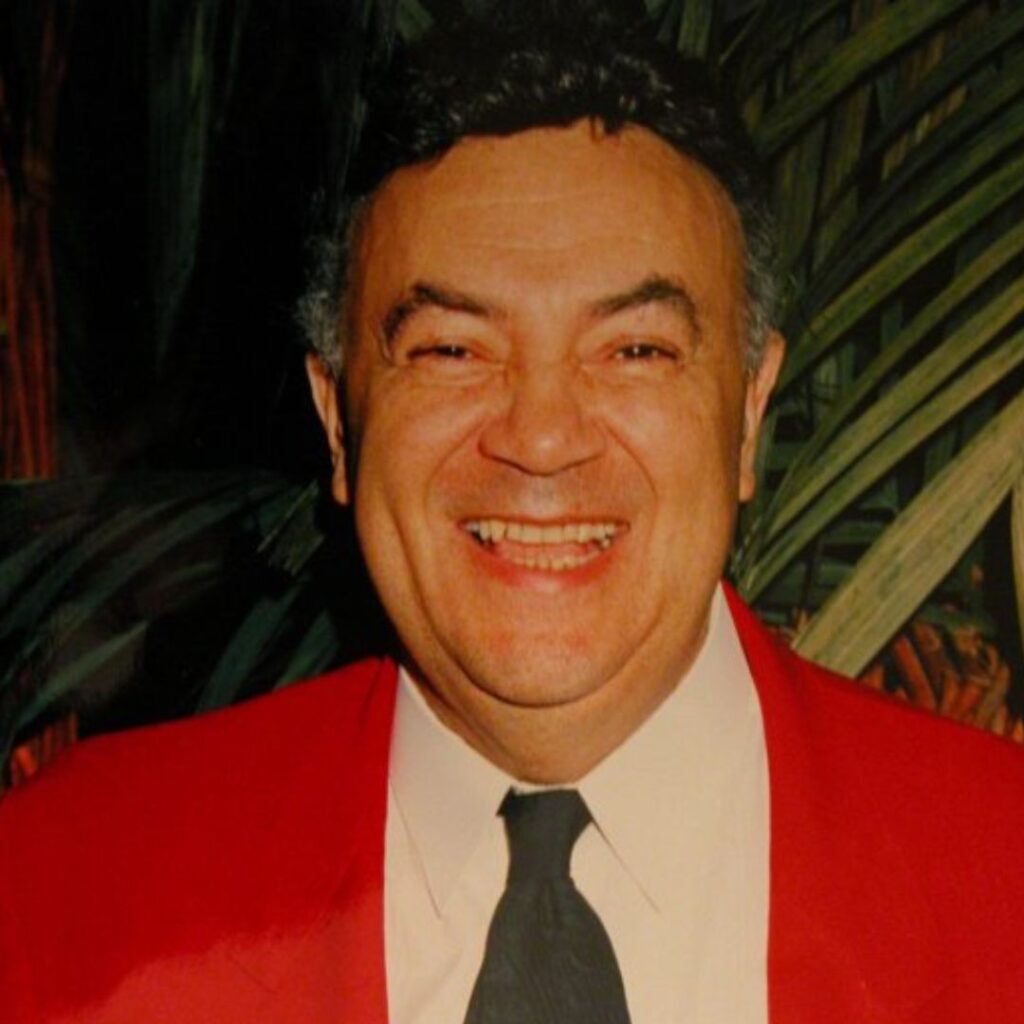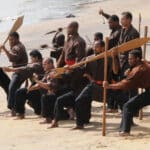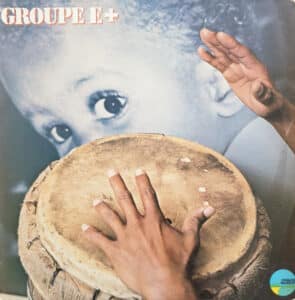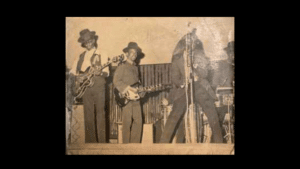Bourgeois music lover
Born in Basse-Terre on April 17, 1933, into a bourgeois music-loving family from Guadeloupe, Gérard La Viny (Labiny of his real name), with a classical training in violin and music theory, has always been immersed in music. musical universe.
His mother being of Puerto Rican origin, he spent many vacations in Puerto Rico and was aware of Afro-Latin music. This even pushes him to finally choose the guitar, as his favorite instrument, rather than the violin.
But although passionate about music, his social class does not allow him to consider a professional career. The path chosen by his parents is clear: studies at Sciences-Pô in Paris.
Call of music stronger
Forced, Gérard La Viny will therefore reluctantly follow studies at Sciences-Pô, despite some rebellions materialized by failed leaks in Puerto Rico.
In return, he flourishes at night, singing and playing his guitar in Parisian restaurants.
Uneasy beginnings
Determined to make music, Gérard La Viny is, but the conditions are not easy. His first contract includes animation in exchange for a meal and a miserable quest among the clientele. Later, he receives a small percentage from each meal sold.
Quant à l’hébergement, il se limite à la charité d’un ami étudiant qui lui permet de dormir dans son lit, quand lui, part en cours.
La Canne à Sucre (The Sugar Cane), the holy grail of French West Indian music in Paris
The year 1953 was a decisive turning point for him. Hired at the famous restaurant La Créole (located in Paris, at the time in the 8th, unlike today, the 14th), he finally found success and gave up even his studies.
There he met Henri Salvador, who became his mentor and gave him the benefit of his connections.
In 1955, under the sponsorship of Joséphine Baker, he was recruited as Artistic Director at the cabaret La Canne à sucre, in Montparnasse, an essential place for West Indian music created in 1949, which hosts the Tout-Paris of celebrities , intellectuals, artists and tourists. Living soul of the place,he will remain there for more than twenty years.


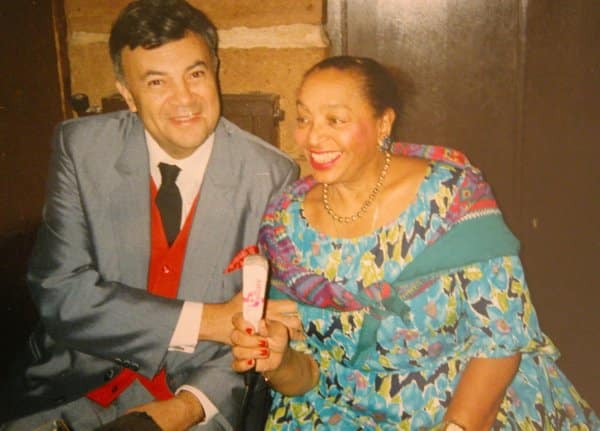

French adaptation of the soundtrack of the film Orfeu Negro
1958 is really for Gérard La Viny, the year of all the encounters, of all the opportunities and where everything starts.
He met film director Marcel Camus, who told him about his film project "Orfeu Negro". This gave him the idea of adapting and interpreting in French the music of the film, originally composed by the Brazilians Antônio Carlos Jobim and Luiz Bonfá.
Accompanied by Jimmy Walter's "Los Brasilianos" orchestra, he released 4 titles:
• The flagship song "Felicidade" which became "Adieu Tristesse";
• Carnaval Samba (O nosso amor)
• Song of Orpheus (Manha de Carnaval)
• Samba of Orpheus (Samba de Orfeu)
He will have another experience of composing film music in 1961, with L'Espace d'un matin, the first film by Sergio Gobbi, director, screenwriter, and producer of Italian cinema living in France.


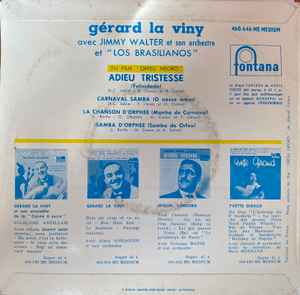

Marpessa Dawn was his employee at La Canne à sucre (the Sugar Cane)
In 1958, then unknown in France, the American actress-singer Marpessa Dawn convinced Gérard La Viny to hire her as a singer and dancer at La Canne à sucre. In 1960, she even recorded an album with him, entitled "A case" at Sugar Cane, where she was vocal lead on the title "L'Amour c'est toi".
The same year 1958, she met the film director Marcel Camus who offered her the main role of Eurydice in the film Orfeu Negro, released in 1959.


Collaboration with Boris Vian
Introduced by his friend-mentor Henri Salvador, Gérard La Viny met Boris Vian. This novelist, journalist, translator, lyricist, promoter of Jazz in France, in charge of the "Jazz" catalog at Philips Fontana, left his mark on French culture. Together, they will write several songs and collaborate from 1958 to 1962, the records of Gérard La Viny coming out on the Fontana label. From the first 45 rpm, it emerges two great successes written jointly, "Without shirt, without pants" and "My mother, it's your mother-in-law". The tone is set: absurd humor, quirky, in short the assumed kidding…
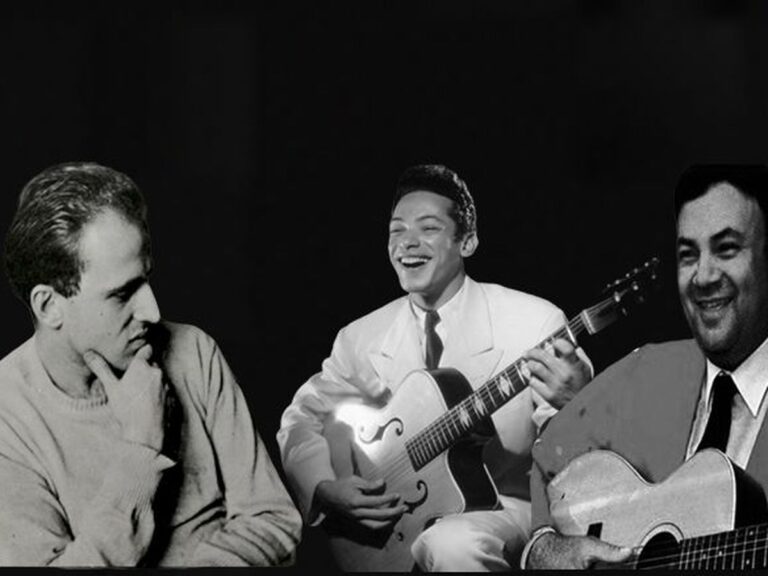

Between satire and serenade
Social satire is the genre that most suits Gérard La Viny. Under the guise of levity, real societal issues inspire his songs.
For example, "Scandale dans la famille", a French adaptation of a popular Trinidad & Tobago song, "Shame and Scandal in the Family", deals with infidelity and hidden illegitimate children from this behavior.
"Roulé pa sizé douvan" is a prevention against unwanted, premature pregnancies, which have occurred through the zeal of young bullies.
"Bois un coup et va au lit (Have a drink and go to bed)" is a philosophy of life, a detached way of approaching life's setbacks and overcoming them.
His “Philosophy” is to take things as they come, with detachment….
If by his talents as a host, Gérard La Viny knows how to set the mood and trigger general hilarity in the public, he also knows how to temper things and soothe the atmosphere with charming songs such as " Ou belle” – ” Bondie bon” – ” The Serenade ” – ” Tal vez”
Quirky humor not always understood
Amateur of songs of self-criticism and self-mockery, even black humor, in which he highlighted the shortcomings and contradictions of the West Indians, to move society towards more positive values. However, some of his songs were not well received, even remaining big hits, notably the song "Neg ni mové mannyè" (Negroes have bad manners", perceived as self-hatred, mulatto racism towards darker blacks, colorism.
Songwriter of his time
A fine observer of his time, Gérard La Viny uses the biguine for its primary purpose: to tell a chronicle of life, to capture a snapshot of a news item or historical event..
Two of his biguine songs particularly illustrate this:
1962 : Crash du Boeing 707 d’Air France en Guadeloupe
Le 22 juin 1962, le Boeing 707 d’Air France, immatriculé F-BHST, en provenance de Paris s’écrase à Deshaies en Guadeloupe, alors qu’il est en approche sur l’aéroport du Raizet de Pointe-à-Pitre, provoquant la mort des 103 passagers, principalement des étudiants guadeloupéens rentrant chez eux pour les vacances et des dix membres d’équipage.
Parmi les victimes, le propre père de Gérard La Viny.
1974: Visit of French Republic President Giscard d'Estaings to the French West Indies
This song from another time, it must be said, which even uses the president's famous election campaign slogan, "Giscard at the bar" testifies to the popular jubilation (organized, instrumentalized or not) that the president of the Republic Giscard d'Estaing visiting the West Indies in 1974.
Launcher in France of merengue, calypso and limbo, from la Canne à Sucre (The )Sugar Cane
Due to his Puerto Rican origins through his mother Gérard La Viny always had this "Latin" sensitivity and because he was also a Caribbean asserted, he played all the rhythms found in this geographical area.
He even used a Latin-sounding nickname, Geraldo La Viny, to ride the wave.
Some rhythms such as samba, Afro-Cuban music had already experienced its golden age in France in the 1930s, including biguine, but others such as merengue, calypso or limbo dance were still unknown .
Having a refined nose, Gérard La Viny has made the West Indian cabaret La Canne à sucre, THE PLACE for Caribbean music, new trends.
For this, he knew how to surround himself with the best musicians in the place.
For example, the contortionist Joe CLEMENDOR, alias Cobra Man, created the attraction by dancing the "limbo". He also collaborated with Gerard La Viny, alias Geraldo La Viny on a calypso album.
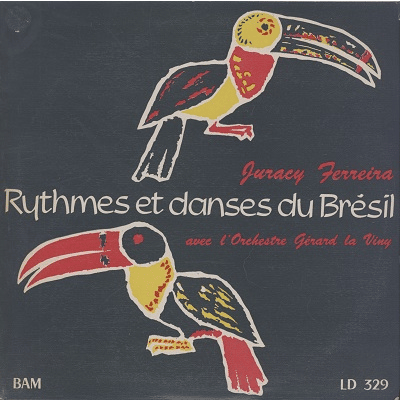

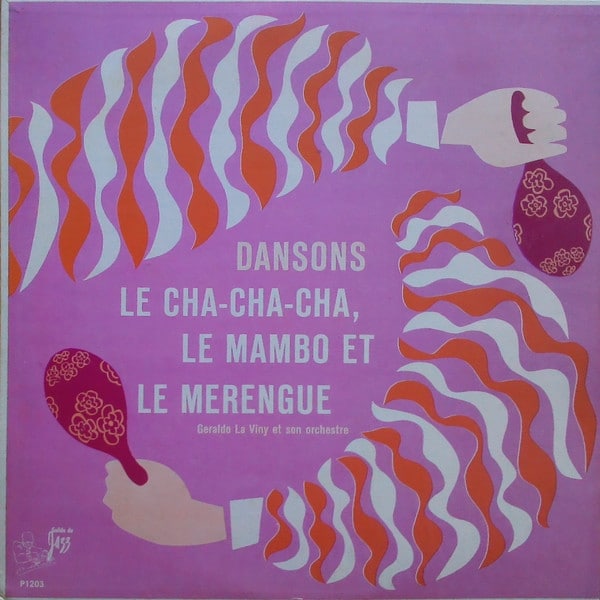

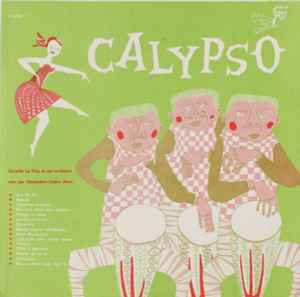

The La Viny Show after la Canne à Sucre (the Sugar Cane)
After twenty years at the Canne à Sucre, Gérard La Viny became a great entertainment entrepreneur, always in the cabaret spirit.
He created with his son Eddy, the Show La Viny , which includes a large orchestra, a troupe of dancers, various reviews.
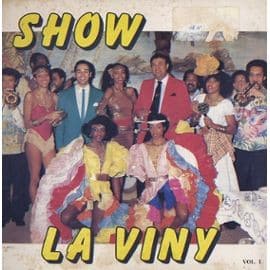

The singer Joëlle Ursull started with him
Before joining the group Zouk Machine, then pursuing a successful solo career, singer Joelle Ursull was a dancer in Gérard La Viny's troupe for a long time and also collaborated with Eddy La Viny, the son.
Today called an exoticizer by some
All his life, Gérard La Viny worked for the West Indies, defended biguine and French West Indian culture, with his own weapons, in the context of the time.
His authentic good humor, his swaying rhythms, his sexy dancers or in Creole costume, his easy rhymes may have led some to think (wrongly?) that he was working in the service of a certain France, colonialist, soaked in clichés, which would explain its great success.
Death
Gérard La Viny died in Paris, following a long illness on October 6, 2009. At his funeral, many personalities from West Indian show biz had come to pay homage to him. He is buried in the cemetery of Montmartre.
